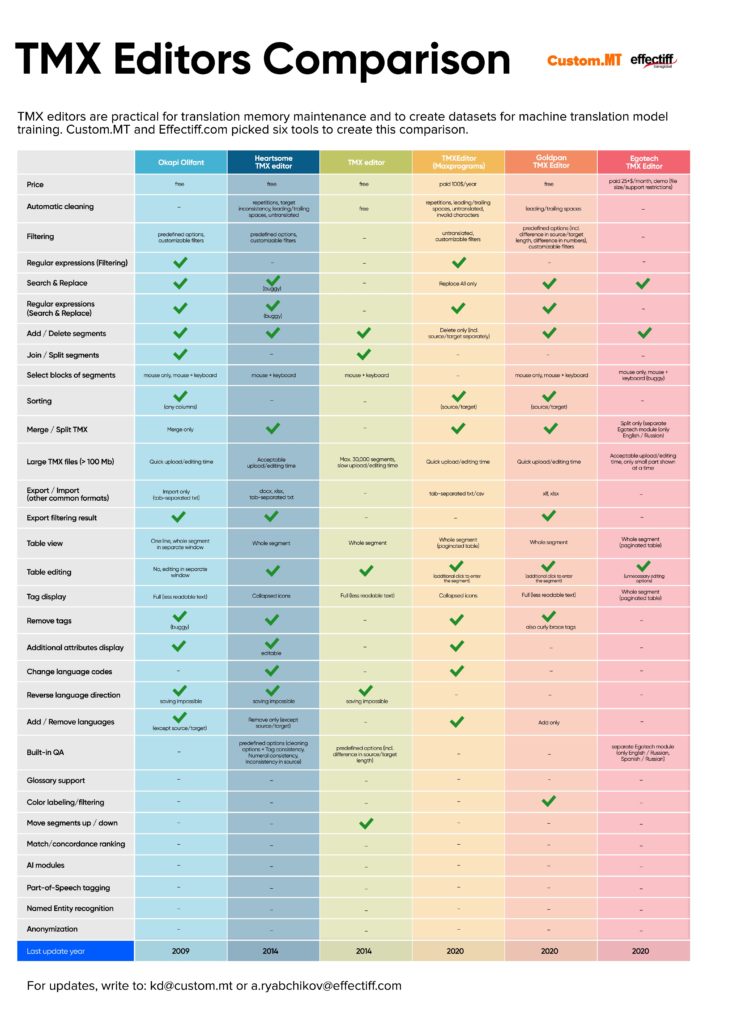Infographic
Translation memories are usually database-type files that contain previously translated texts. They also include the texts’ formatting and other properties. Some of the properties are defined by default (e.g., source and target language, date, time, the user ID or CAT tool that performed the translation, etc.), while others the user can add as custom attributes. Each CAT tool has its way of storing translation memories. But it is essential for all language service providers to share translation memories.
This is where TMX editors come into play. The name comes from the corresponding file format. Translation Memory eXchange (TMX) is an XML-based format. By design it serves as a universal solution for exchanging translation memories between different computer-aided translation and localization tools.
In this report, we provide a comparison of TMX Editors available on the market. We hope it assists machine translation specialists. Choosing the best tool is essential to effectively clean up translation memories and prepare datasets for MT model training.

High-res infographic is available here.

Comments are closed.